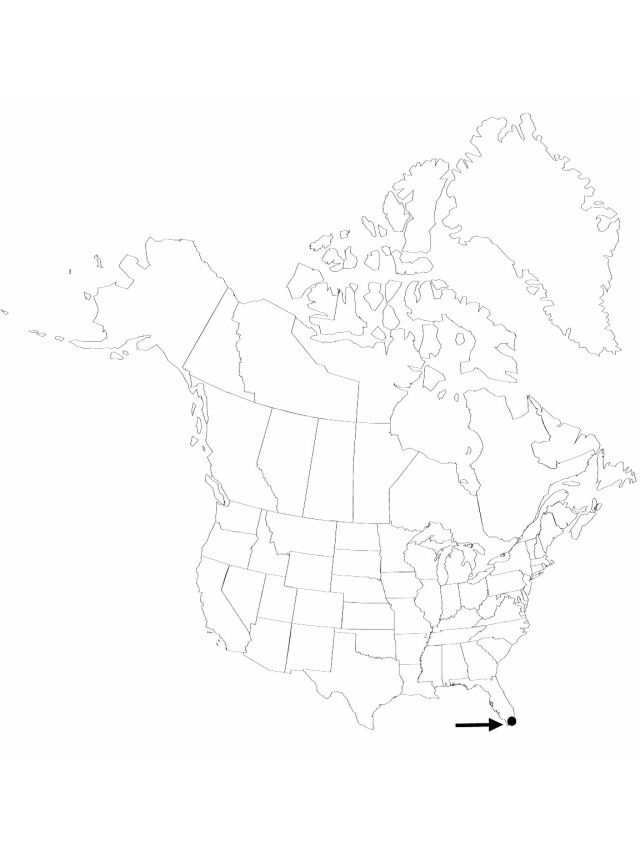Sabal miamiensis
Brittonia 37: 366, figs. 1–2. 1985.
Stems subterranean. Leaves 3–6, yellow-green, strongly costapalmate; hastula narrowly triangular, 2.4–7.7 cm; segments filiferous, 50–85 × 2.8–3.0 cm; apices bifid2-cleft. Inflorescences paniculate, loosely branched with 3 orders of branching (not counting main inflorescence axis), horizontal-arching, about as long as leaves. Flowers 5–5.5 mm. Fruits black, shiny, oblate-spheroid, length 14.3–16.9 mm, diam. 15.7–19 mm; pericarp thick, fleshy. Seeds 6.2–6.7 mm, diam. 10.2–11 mm diam.
Phenology: Flowering spring–summer.
Habitat: Rocky calcareous soil of Miami pinelands
Elevation: 0–10 m
Discussion
This species is restricted to the oölitic limestone of the pine rocklands of Dade County (S. Zona 1985). The natural habitat of Sabal miamiensis has been urbanized, so this species is likely extinct. Despite differences in habitat, this species may not be distinct from S. etonia.
Of conservation concern.
